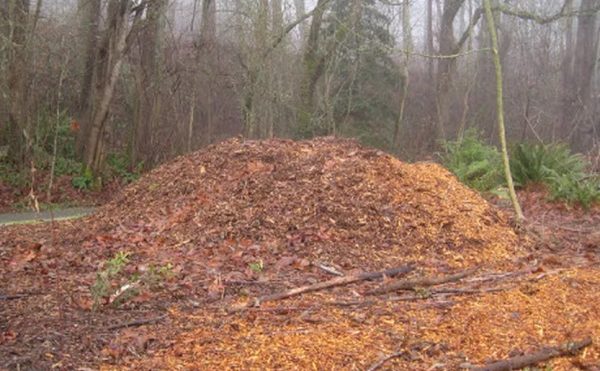Landscape mulches are increasingly recognized as pivotal components of environmentally sustainable gardens and green spaces. Select the right mulch and you reap the benefits of healthier soils and plants. Choose the wrong mulch and the only plants that thrive are the weeds.
Before selecting a landscape mulch material, it’s important to reflect on the purpose of the landscape in question. For instance, production agriculture generally requires short term, intensive management of a crop, while the philosophy behind landscape horticulture is the long term, sustainable management of a system. Therefore, those mulches that work best for crop production (including vegetable gardens) are often not the best choices for woody ornamental landscapes, and vice versa.
Direct benefits:
The potential, direct benefits of any landscape mulch material can be grouped into four general categories:
Soil benefits:
- improve structure
- enhance gas transfer
- enhance water infiltration and retention
- prevent erosion and compaction
- moderate temperature
Plant benefits:
- provide nutrients
System benefits:
- suppress pathogens and pests
- enhance beneficial organisms
- increase biodiversity
- neutralize pollutants
Human benefits:
- economic
- aesthetic
- ease of application
An exhaustive review of the science behind landscape mulches is beyond the scope of this column (though I have just completed such a review for upcoming publication in a scientific journal). Instead, I’m going to address the documented benefits and drawbacks behind the use of arborist wood chips as a landscape mulch. Perfect choice In areas where trees are a dominant feature of the landscape, arborist wood chips represent one of the best mulch choices for trees and shrubs.
A 1990 study evaluated the landscape mulch potential of 15 organic materials, including grass clippings, leaves, composts, yard wastes, bark, and wood chips. Wood chips were one of the best performers in terms of moisture retention, temperature moderation, weed control, and sustainability. In many urban areas, arborist wood chips are available for free, representing one of the most economically practical choices. Unlike the uniform nature of sawdust and bark mulches, wood chips include bark, wood, and often leaves. The chemical and physical diversity of these materials resists the tendency towards compaction seen in sawdust and bark.
Additionally, the materials vary in their size and decomposition rate, creating a more diverse environment that is subsequently colonized by a diverse soil biota. A biologically diverse soil biota is more resistant to environmental disturbance and will in turn support a diverse and healthy plant population.

